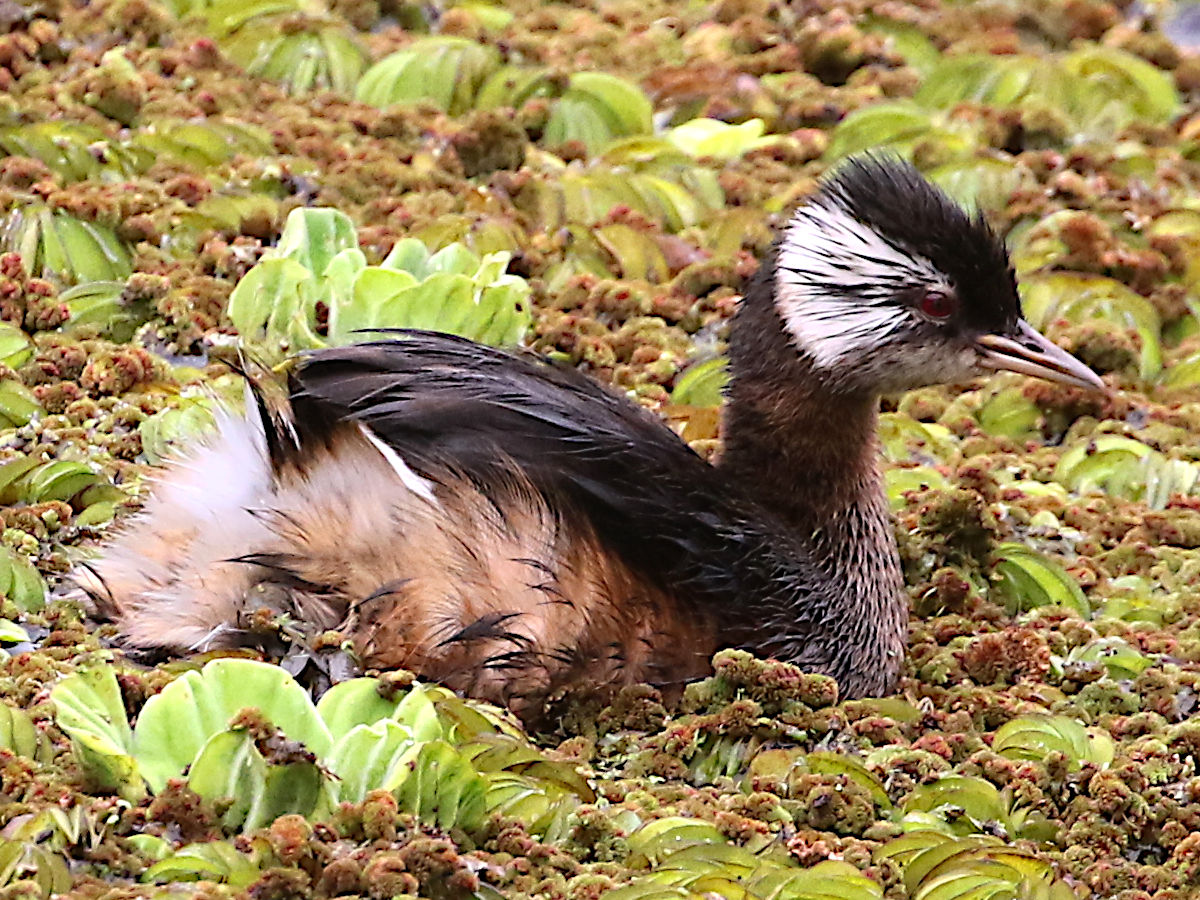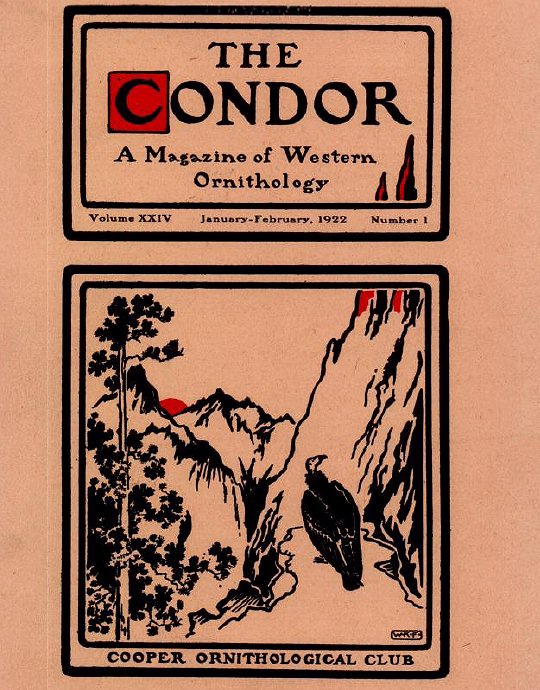|
Rollandia Rolland
The white-tufted grebe (''Rollandia rolland''), also known as Rolland's grebe, is a species of grebe in the family Podicipedidae. Found in the southern half of South America, its natural habitat is freshwater lakes, ponds and sluggish streams. Taxonomy and etymology Three subspecies are recognised: *''R. r. chilensis'' (Lesson, 1828) – South Peru and southeast Brazil southwards to Cape Horn and Tierra del Fuego. *''R. r. morrisoni'' (Simmons, 1962) – Central Peru. *''R. r. rolland'' ( Quoy & Gaimard, 1824) – Falkland Islands. The white-tufted grebe is also called Rolland's grebe. Description The male and female white-tufted grebe look alike and are between in length. Adults in breeding plumage have a prominent black crest on the back of their heads. There is a large white tuft of feathers around the ear but otherwise the head, neck and back are black, with a slight greenish sheen, and the feathers of the mantle and back are narrowly bordered with brown. The ... [...More Info...] [...Related Items...] OR: [Wikipedia] [Google] [Baidu] |
Jean René Constant Quoy
Jean René Constant Quoy (10 November 1790 in Maillé, Vendée, Maillé – 4 July 1869 in Rochefort, Charente-Maritime, Rochefort) was a French naval surgeon, zoologist and anatomist. In 1806, he began his medical studies at the school of naval medicine at Rochefort, Charente-Maritime, Rochefort, afterwards serving as an auxiliary-surgeon on a trip to the Antilles (1808–1809). After earning his medical doctorate in 1814 at Montpellier, he was surgeon-major on a journey to Réunion (1814–1815). Along with Joseph Paul Gaimard, he served as naturalist and surgeon aboard the ''Uranie'' under Louis de Freycinet from 1817 to 1820, and on the ''French ship Astrolabe (1817), Astrolabe'' (1826–1829) under the command of Jules Dumont d'Urville. In July 1823 he and Gaimard presented a paper to the Académie royale des Sciences on the origin of coral reefs, taking issue with the then widespread belief that these were constructed by coral polyps from bases in very deep water and arguin ... [...More Info...] [...Related Items...] OR: [Wikipedia] [Google] [Baidu] |
Tierra Del Fuego
Tierra del Fuego (, ; Spanish for "Land of the Fire", rarely also Fireland in English) is an archipelago off the southernmost tip of the South American mainland, across the Strait of Magellan. The archipelago consists of the main island, Isla Grande de Tierra del Fuego, with an area of , and a group of many islands, including Cape Horn and Diego Ramírez Islands. Tierra del Fuego is divided between Chile and Argentina, with the latter controlling the eastern half of the main island and the former the western half plus the islands south of Beagle Channel and the southernmost islands. The southernmost extent of the archipelago is just north of latitude 56°S. The earliest known human settlement in Tierra del Fuego dates to approximately 8,000 BC. Europeans first explored the islands during Ferdinand Magellan's expedition of 1520. ''Tierra del Fuego'' and similar namings stem from sightings of the many bonfires that the natives built. Settlement by those of European descent and ... [...More Info...] [...Related Items...] OR: [Wikipedia] [Google] [Baidu] |
Rollandia (bird)
'' Rollandia '' is a small genus of birds in the grebe family. Its two members are found in South America South America is a continent entirely in the Western Hemisphere and mostly in the Southern Hemisphere, with a relatively small portion in the Northern Hemisphere at the northern tip of the continent. It can also be described as the southe .... Species They are: References ITIS Bird genera Taxa named by Charles Lucien Bonaparte {{Podicipediformes-stub ... [...More Info...] [...Related Items...] OR: [Wikipedia] [Google] [Baidu] |
Least Concern
A least-concern species is a species that has been categorized by the International Union for Conservation of Nature (IUCN) as evaluated as not being a focus of species conservation because the specific species is still plentiful in the wild. They do not qualify as threatened, near threatened, or (before 2001) conservation dependent. Species cannot be assigned the "Least Concern" category unless they have had their population status evaluated. That is, adequate information is needed to make a direct, or indirect, assessment of its risk of extinction based on its distribution or population status. Evaluation Since 2001 the category has had the abbreviation "LC", following the IUCN 2001 Categories & Criteria (version 3.1). Before 2001 "least concern" was a subcategory of the "Lower Risk" category and assigned the code "LR/lc" or lc. Around 20% of least concern taxa (3261 of 15636) in the IUCN database still use the code "LR/lc", which indicates they have not been re-evaluate ... [...More Info...] [...Related Items...] OR: [Wikipedia] [Google] [Baidu] |
IUCN
The International Union for Conservation of Nature (IUCN; officially International Union for Conservation of Nature and Natural Resources) is an international organization working in the field of nature conservation and sustainable use of natural resources. It is involved in data gathering and analysis, research, field projects, advocacy, and education. IUCN's mission is to "influence, encourage and assist societies throughout the world to conserve nature and to ensure that any use of natural resources is equitable and ecologically sustainable". Over the past decades, IUCN has widened its focus beyond conservation ecology and now incorporates issues related to sustainable development in its projects. IUCN does not itself aim to mobilize the public in support of nature conservation. It tries to influence the actions of governments, business and other stakeholders by providing information and advice and through building partnerships. The organization is best known to the wider ... [...More Info...] [...Related Items...] OR: [Wikipedia] [Google] [Baidu] |
Clutch (eggs)
__NOTOC__ A clutch of eggs is the group of eggs produced by birds, amphibians, or reptiles, often at a single time, particularly those laid in a nest. In birds, destruction of a clutch by predators (or removal by humans, for example the California condor breeding program) results in ''double-clutching''. The technique is used to double the production of a species' eggs, in the California condor case, specifically to increase population size. The act of putting one's hand in a nest to remove eggs is known as "dipping the clutch". Size Clutch size differs greatly between species, sometimes even within the same genus. It may also differ within the same species due to many factors including habitat, health, nutrition, predation pressures, and time of year. Clutch size variation can also reflect variation in optimal reproduction effort. In birds, clutch size can vary within a species due to various features (age and health of laying female, ability of male to supply food, and abundan ... [...More Info...] [...Related Items...] OR: [Wikipedia] [Google] [Baidu] |
The Condor (journal)
''Ornithological Applications'', formerly ''The Condor'' and ''The Condor: Ornithological Applications'', is a peer-reviewed quarterly scientific journal covering ornithology. It is an official journal of the American Ornithological Society. History The journal was first published in 1899 as the ''Bulletin of the Cooper Ornithological Club'' by a group of biologists in California. The journal's scope was regional, covering the western United States. In 1900, the name was changed to ''The Condor''. In 1947, the journal's subtitle was shortened to ''The Condor, Journal of the Cooper Ornithological Club''. Editors-in-Chief: 1899-1902: Chester Barlow; 1902-1905: Walter K. Fisher with Joseph Grinnell as Associate Editor; 1906-1939 Joseph Grinnell; 1940-1966: Alden H. Miller Berkeley, CA; 1966-1968: James R. King Washington State; 1969-1973: Ralph J. Raitt New Mexico State University; 1973-1974: Francis S. L. Williamson SI Chesapeake Bay Center for Environmental Studies, Edgewater, ... [...More Info...] [...Related Items...] OR: [Wikipedia] [Google] [Baidu] |
Rollandia Rolland-swims , an asteroid
{{Disambiguation, genus ...
Rollandia may refer to: * ''Rollandia'' (bird), a genus of birds in the family Podicipedidae * ''Rollandia'', a former genus of plants now included in the genus ''Cyanea'' * 1269 Rollandia 1269 Rollandia, provisional designation , is a dark Hildian asteroid from the outermost region of the asteroid belt, approximately in diameter. It was discovered on 20 September 1930, by Soviet astronomer Grigory Neujmin at the Simeiz Observato ... [...More Info...] [...Related Items...] OR: [Wikipedia] [Google] [Baidu] |
Falkland Islands
The Falkland Islands (; es, Islas Malvinas, link=no ) is an archipelago in the South Atlantic Ocean on the Patagonian Shelf. The principal islands are about east of South America's southern Patagonian coast and about from Cape Dubouzet at the northern tip of the Antarctic Peninsula, at a latitude of about 52°S. The archipelago, with an area of , comprises East Falkland, West Falkland, and 776 smaller islands. As a British overseas territory, the Falklands have internal self-governance, but the United Kingdom takes responsibility for their defence and foreign affairs. The capital and largest settlement is Stanley on East Falkland. Controversy exists over the Falklands' discovery and subsequent colonisation by Europeans. At various times, the islands have had French, British, Spanish, and Argentine settlements. Britain reasserted its rule in 1833, but Argentina maintains its claim to the islands. In April 1982, Argentine military forces invaded the islands. British a ... [...More Info...] [...Related Items...] OR: [Wikipedia] [Google] [Baidu] |
Cape Horn
Cape Horn ( es, Cabo de Hornos, ) is the southernmost headland of the Tierra del Fuego archipelago of southern Chile, and is located on the small Hornos Island. Although not the most southerly point of South America (which are the Diego Ramírez Islands), Cape Horn marks the northern boundary of the Drake Passage and marks where the Atlantic and Pacific Oceans meet. Cape Horn was identified by mariners and first rounded in 1616 by the Dutchman Willem Schouten and Jacob Le Maire, who named it after the city of Hoorn in the Netherlands. For decades, Cape Horn was a major milestone on the clipper route, by which sailing ships carried trade around the world. The waters around Cape Horn are particularly hazardous, owing to strong winds, large waves, strong currents and icebergs. The need for boats and ships to round Cape Horn was greatly reduced by the opening of the Panama Canal in August 1914. Sailing around Cape Horn is still widely regarded as one of the major challenges in y ... [...More Info...] [...Related Items...] OR: [Wikipedia] [Google] [Baidu] |
Joseph Paul Gaimard
Joseph Paul Gaimard (31 January 1793 – 10 December 1858) was a French naval surgeon and naturalist. Biography Gaimard was born at Saint-Zacharie on January 31, 1793. He studied medicine at the naval medical school in Toulon, subsequently earning his qualifications as a naval surgeon. Along with Jean René Constant Quoy, he served as naturalist on the ships ''L'Uranie'' under Louis de Freycinet 1817–1820, and '' L'Astrolabe'' under Jules Dumont d'Urville 1826–1829.Google Books Discovery of Australia's Fishes: A History of Australian Ichthyology to 1930 by Brian Saunders During this voyage they discovered the now extinct giant of |
Brazil
Brazil ( pt, Brasil; ), officially the Federative Republic of Brazil (Portuguese: ), is the largest country in both South America and Latin America. At and with over 217 million people, Brazil is the world's fifth-largest country by area and the seventh most populous. Its capital is Brasília, and its most populous city is São Paulo. The federation is composed of the union of the 26 States of Brazil, states and the Federal District (Brazil), Federal District. It is the largest country to have Portuguese language, Portuguese as an List of territorial entities where Portuguese is an official language, official language and the only one in the Americas; one of the most Multiculturalism, multicultural and ethnically diverse nations, due to over a century of mass Immigration to Brazil, immigration from around the world; and the most populous Catholic Church by country, Roman Catholic-majority country. Bounded by the Atlantic Ocean on the east, Brazil has a Coastline of Brazi ... [...More Info...] [...Related Items...] OR: [Wikipedia] [Google] [Baidu] |





